Holly varieties and cultivation
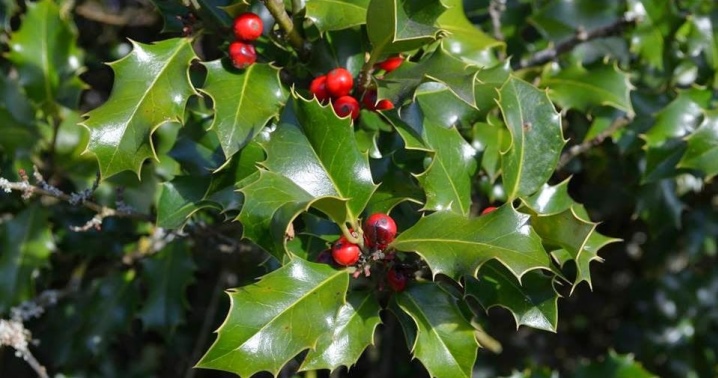
Holly is a vigorous, showy plant with carved emerald foliage. With the arrival of autumn, the holly is covered with numerous scarlet fruits, which give it a truly festive look. Consider in the article what is remarkable about this unusual plant, what varieties of it are popular, what nuances of growing, reproducing and caring for a plant a gardener needs to know.
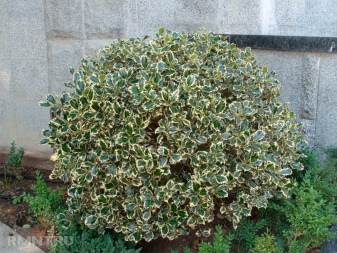
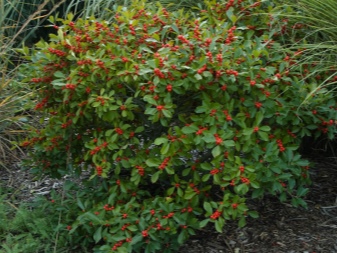
Description
Holly (aka holly, common holly) is a type of tree and shrub plants of the genus holly, growing in some countries of Europe, South-West Asia and Africa. The species in question is most common in tropical and temperate climates. Refers to evergreens.
The height of adult holly in their natural range can vary from 10 to 20 meters or more. At the same time, the diameter of the plant trunk can reach 50-80 centimeters. It is also noteworthy that the holly is a long-liver - this powerful tree can live up to 100 years or more.
Holly has a strong, straight stem covered with grayish-brown bark. The leaves are glossy, ovoid, emerald green on the outside and pale herbaceous on the inside. The edges of the leaves are uneven, wavy, have pointed notches. It should be noted that the notches of both fresh and dry holly leaves can be severely injured, so any work with the plant should be carried out with the utmost care and always wearing thick gloves.
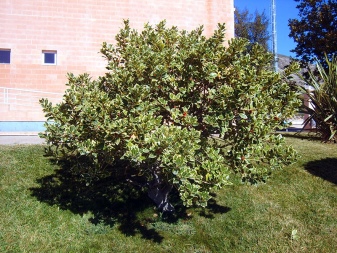
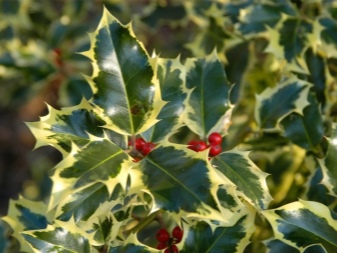
Holly branches strong, resilient, well branched, covered with smooth brownish-green bark... In Catholic countries, holly branches are used to make ornate Christmas wreaths. Representatives of the species in question enter the flowering phase at the beginning of summer (May-June). The flowers are small, inconspicuous, 4-petaled, porcelain white with a yellow center.
In holly-leaved holly growing in their natural habitat (in warm climatic zones), in August-September, fruits begin to form - ruby-scarlet juicy drupes of a round shape... The size of holly fruits can vary from 0.5 to 1 cm. The fruits contain a dangerous alkaloid, therefore, they are strictly not allowed to be eaten.
The duration of fruiting in wild-growing hollies is several months from early fall to mid-winter.
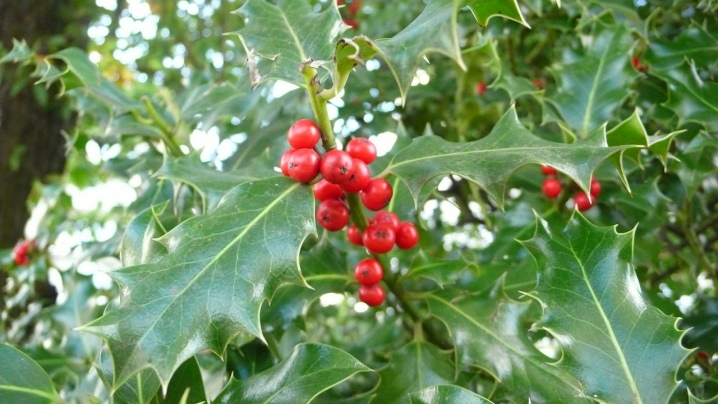
One of the specific features of holly is their slow growth. The average annual growth of the aboveground parts of the plant (trunk, branches, shoots) is slightly more than 10 centimeters. This feature of the plant made it popular among fans and masters of topiary art.
Holly leaves are widely used in landscape design due to their attractive and unusual appearance. They do not require increased attention to themselves, lend themselves well to curly haircuts, are able to withstand a short-term cold snap to temperatures not lower than -20 ° C.
These plants are allowed to grow in the southern regions (Kuban) and regions with moderately cold winters (Moscow region, Ural) with obligatory shelter in the cold. This type of holly is not recommended for cultivation in Siberia and the northern regions.
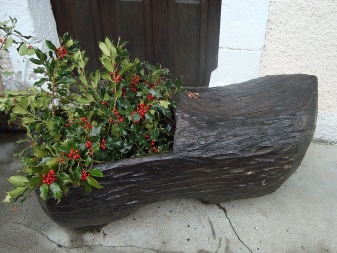
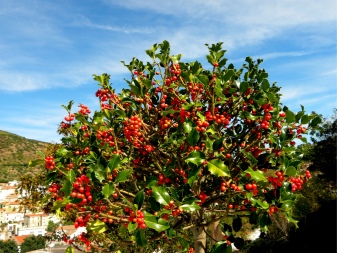
Review of the best varieties
The common holly is one of the most common representatives of the holly family in garden design. From this species, breeders managed to get many cultivated forms and hybrids adapted to difficult climatic conditions.
"Silver Queen"
Highly decorative variety of holly holly. The plant is a powerful shrub up to 3-4 meters high. The diameter of the crown of an adult bush can reach 1.5 m. The leaves are glossy, carved, emerald in color, decorated with a wide silvery-beige stripe along the edges. It lends itself well to cropping and curly hair... Blooms in late spring - early summer. The variety is considered frost-resistant and is suitable for growing in regions with difficult climatic conditions (Moscow region, Ural) with mandatory shelter for the winter (or wintering indoors).
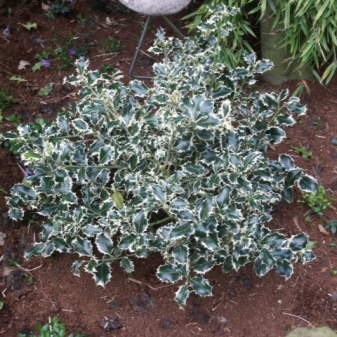
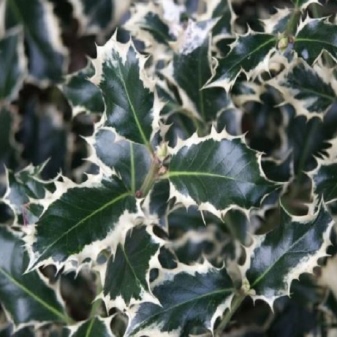
"Argentea Marginata"
A holly variety recommended for growing in temperate regions. It is a low shrub with many strong erect shoots. The leaves are serrated, dark green, with a creamy stripe. Young leaves along the edges are decorated with a strip of crimson-pink color. Young shoots have the same color. During fruiting, numerous ruby-red drupes form on the plant. When grown in regions with changeable climatic and weather conditions, the variety requires a mandatory shelter for the winter.
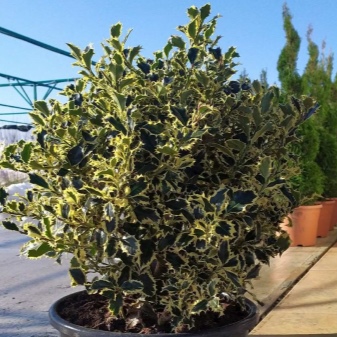
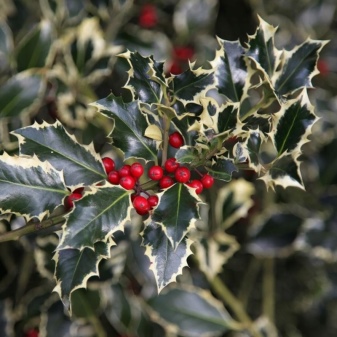
"White Cream"
An original variety of common holly with unusual marble-colored leaves. The plant is a compact shrub with low upward shoots.
The leaves are serrated, with wavy sides, creamy beige, decorated with an emerald stripe along the edges.
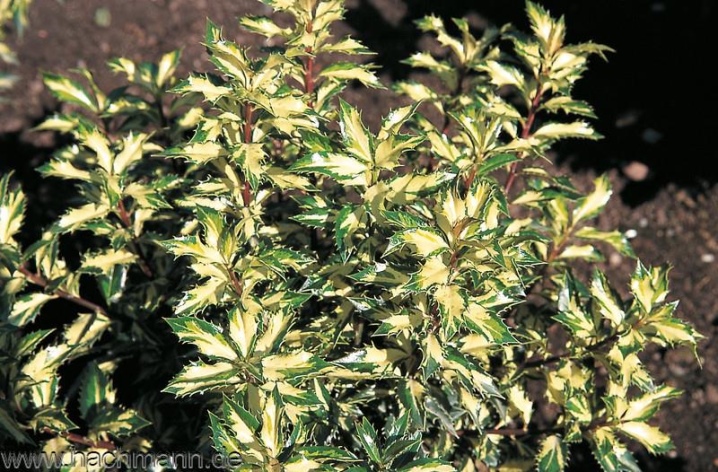
"Alaska"
One of the hardiest female holly varieties, resistant to low temperatures and direct sunlight. It is an evergreen shrub with a pyramidal crown. The leaves are shiny, dark green, with wavy edges. The variety enters the flowering phase in May-June. If there are male varieties of holly on the site, the plants are pollinated and with the arrival of autumn they form many rich red fruits.
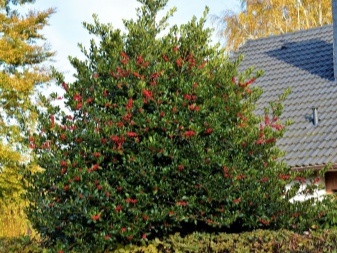
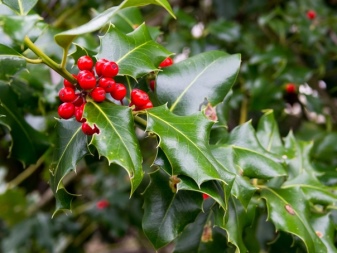
Golden King
A spectacular variety of holly with two-colored foliage. This evergreen shrub is capable of reaching a height of 3-5 meters. The crown diameter can vary from one to one and a half meters. The leaves are serrated, carved, emerald green, with a golden cream strip along the edges... During fruiting, it forms numerous bright red juicy drupes.
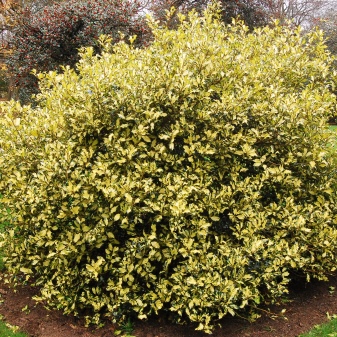
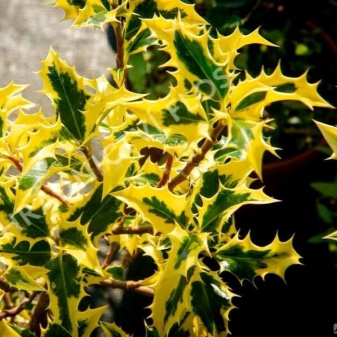
Landing
For planting a common holly, it is recommended to allocate lighted areas with loose fertile soil, especially holly with a two-color leaf color. However, in partial shade, in places with clay or sandy soil, these plants are also able to take root safely. An important condition when choosing a site is soil drainage, since holly do not tolerate stagnant water at the roots.
Plants should be planted in open ground in autumn or early spring. If the seedlings are planned to be planted in the spring, then it is allowed to start arranging the planting holes in the fall.
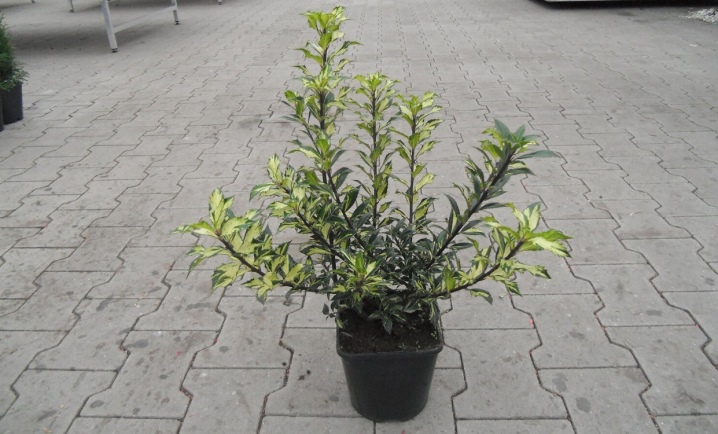
The size of the planting pits depends on the size of the root ball of the seedlings. Before planting on the bottom of the holes, drainage should be laid in the form of pieces of brick, expanded clay, coarse sand and / or crushed stone. Then the hole is filled by 1 / 3-1 / 2 part with a soil mixture consisting of garden soil, rotted manure and peat (proportions 1: 1: 1).
After that, carefully place the seedling in the pit, filling it with the remaining soil mixture from all sides. Further, the surface of the earth around the seedling is lightly tamped, watered and covered with mulch.
At the time of adaptation, the seedling is covered from direct sunlight with an impromptu awning.

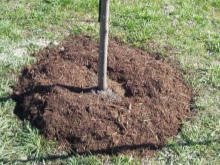

Care
The common holly is considered a plant that does not impose excessive demands on care. So that it does not lose its decorative effect, blooms profusely and bears fruit, it is necessary to provide for it with regular watering and feeding in the warm season, as well as reliable protection in winter.
Watering
Hollows are painful to tolerate both drought and stagnant moisture in the soil. In hot summer, it is recommended to water them 2-3 times a week.... Additionally, in the evening or morning hours, the bushes can be sprayed with water. In the cold season, watering can be done once a week. Do not water the plants during the rainy season.

Fertilizer
Fertilizing allows holly to actively build up green and root mass, maintain an attractive appearance, bloom and bear fruit abundantly. The first feeding is carried out in the spring, applying organic fertilizers containing nitrogen under the bushes (fresh manure is not allowed!). This will stimulate the growth of new strong shoots and roots. Since the end of July, nitrogen fertilizers have not been applied. In the future, gardeners recommend feeding holly every 2-3 weeks, using ready-made complex fertilizers for ornamental shrubs containing potassium and phosphorus.
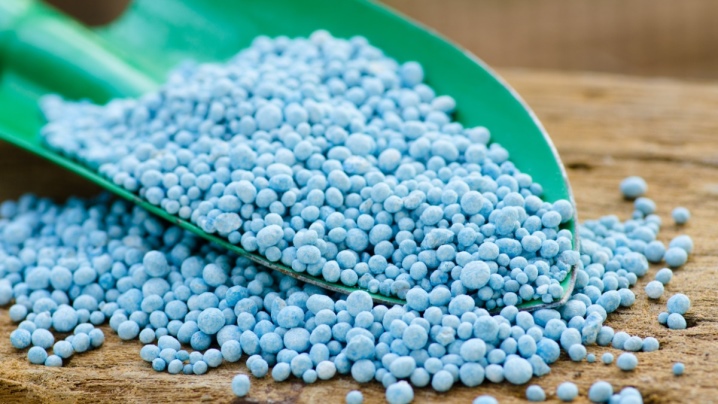
Preparing for winter
Holly leaves, not being winter-hardy plants, are able to withstand a drop in air temperature to -20 ° C ... 22 ° C, only for a short period. In the harsh winter, in the absence of reliable shelter, these inhabitants of the rainforest can die.
To protect the holly from freezing, on the eve of cold weather (approximately in mid-late autumn), the ground in the near-trunk circle is mulched with peat and / or wood shavings. The above-ground part of the bush is recommended to be tied with twine, wrapped in several layers of burlap and covered with spruce branches. The laid spruce branches should also be tied with twine or a strong cord. Non-woven fabrics cannot be used to cover bushes.
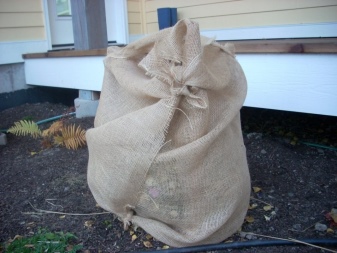

Hollows grown in containers are sent indoors by many gardeners to winter. Do the same with young holly bushes grown in the open field.
They are carefully dug up, after which they are transplanted into a container and brought into the house until spring.
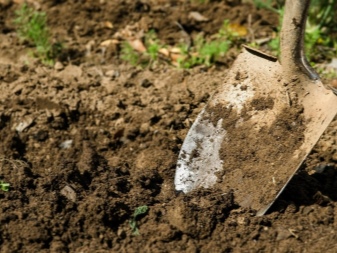
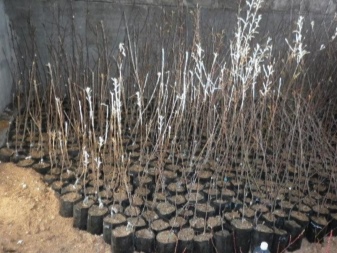
Reproduction
Holly breed in the wild seeds, found in fruits that birds eat. Gardeners prefer to propagate this ornamental plant in a vegetative way - using cuttings and layering.
For propagation of holly by cuttings, small (7-10 centimeters long) cut parts of young and healthy branches with 2-3 buds are used. Cuttings are planted at a slight angle in a mini-greenhouse with light fertile soil mixed with sand, after which they are watered and covered with film or glass. It is recommended to pre-soak the cuttings in a solution of any root formation stimulator ("Epin" or "Zircon") for 10-12 hours. The successful rooting of cuttings will be evidenced by the swelling of the buds and the appearance of the first leaves.
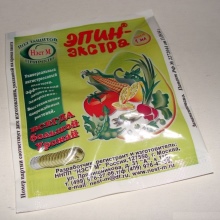
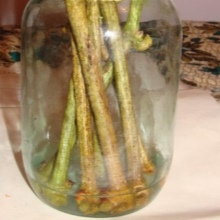
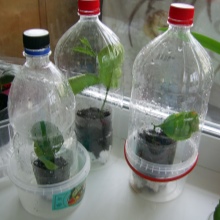
To propagate the holly by layering, in the fall 2-3 of the strongest and most powerful shoots are bent from the bush, cut them in the middle from the bottom side and pinned to the ground with a wooden bracket or other fixing device (the bracket is placed at the point of the incision). Then the pinned part of the stem is covered with fertile soil, sand and mulch. During the rooting period, the place of fixation of the stem is watered, preventing it from drying out. For the winter, the bush with layering is covered with burlap and spruce branches. Full rooting of the holly cut usually occurs the following year.

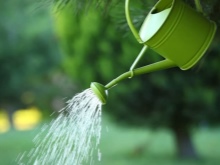
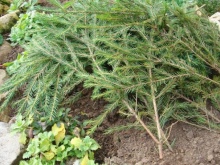
Diseases and pests
One of the most dangerous diseases that pose a threat to holly is late blight. This fungal disease is characterized by rapid development, active damage to plants in the area, and the ability to spread with the wind. The most favorable conditions for the development of late blight is the air temperature above + 10 ° C and its high humidity (from 75% or more).
The defeat of plants by late blight is evidenced by the appearance of traces of white fluffy bloom, darkening and death of leaves, the appearance of an unpleasant odor at the base of the bush.

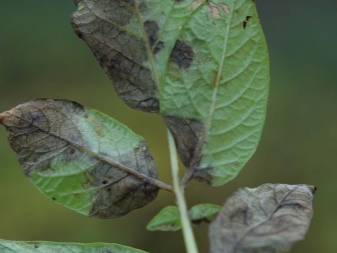
Bushes at the initial stages of the development of the disease are carefully treated with fungicidal preparations. Plants with traces of severe damage are destroyed, and the land on the site is treated with disinfectants. One of the main measures for the prevention of late blight, as well as root rot and powdery mildew, is to maintain an optimal level of soil moisture and, if possible, air.
Hollows growing outdoors are often invaded leaf rollers - winged insects (butterflies), whose larvae and caterpillars devour foliage, buds and young shoots of plants. Due to the activity of pests in holly, the leaves begin to curl, dry and die off. To combat caterpillars and larvae of leafworms, gardeners use insecticides - "Karbofos", "Binom", "Desant", "Danitol".
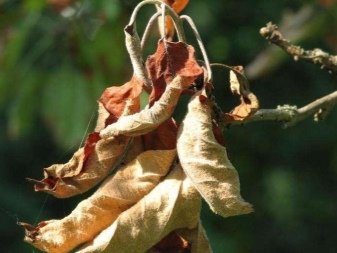

Application in landscape design
Holly looks great in group plantings when surrounded by other ornamental shrubs - hydrangeas, euonymus, thuja, juniper, holly mahonia. It looks no less impressive as a solo plant surrounded by flowering perennials - for example, bush roses or lilies.

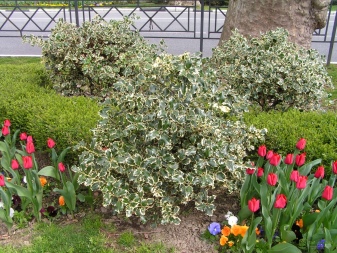
Shrub sculptors create intricate topiary figures from holly holly. The pliability of this plant and its ability to easily tolerate a haircut make it possible to create green compositions of any degree of complexity from it.


Hollows are often used by landscape designers to create eye-catching hedges.... It is noteworthy that in regions with a warm climate, such hedges do not lose their attractiveness in winter, thanks to the abundance of ruby-red fruits that adorn the bushes until spring.
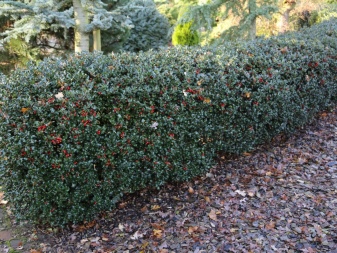
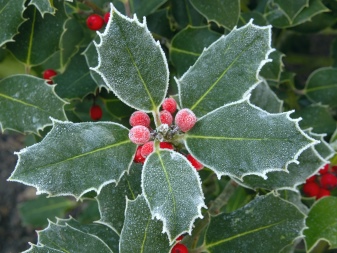



































































The comment was sent successfully.